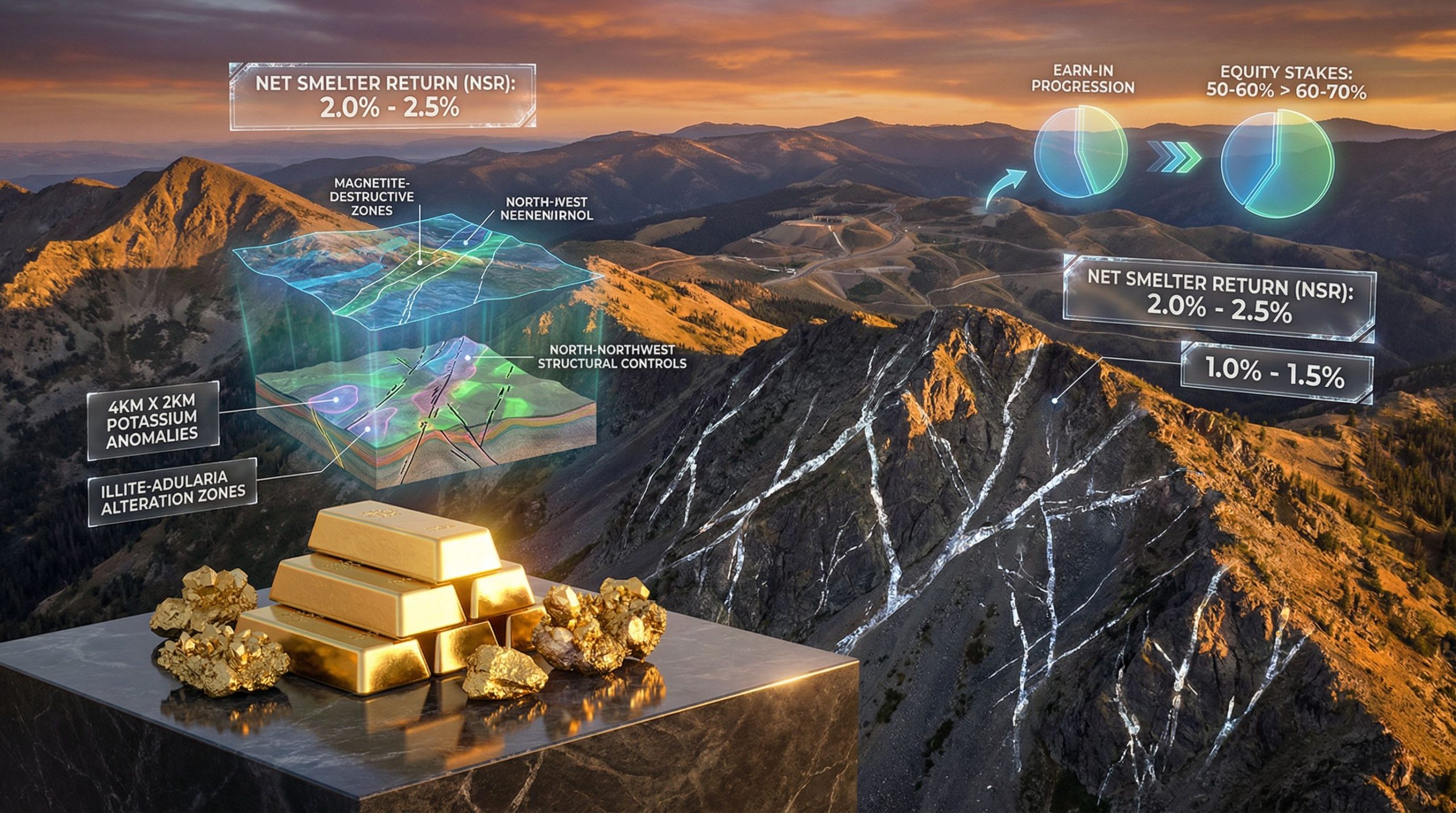What Are China's New Rare Earth Export Controls?
China's latest export controls on rare earth minerals represent a seismic shift in global supply chains for critical materials. Implemented in May 2025, these restrictions have rapidly disrupted international trade patterns and sent shockwaves through multiple industries. The controls specifically target the most commercially valuable rare earth elements, including neodymium, praseodymium, dysprosium, and terbium—all critical components in advanced manufacturing.
Unlike previous restrictions, the current export control regime employs a sophisticated licensing system requiring extensive documentation and lengthy approval processes for each shipment. Companies seeking to import Chinese rare earths must now navigate complex application procedures and face significant uncertainties about approval timelines.
"China is willing to enhance communication and dialogue with relevant countries on export controls and actively promote the facilitation of compliant trade," stated Ministry of Commerce spokesperson He Yadong in a recent press briefing.
Despite such diplomatic language, the actual approval rate for license applications has remained critically low, with priority seemingly given to companies from countries not engaged in US‑China trade impacts with Beijing.
Understanding the Strategic Minerals at Stake
Rare earth elements, despite their name, are relatively abundant in the Earth's crust. However, economically viable concentrations are scarce, and processing these elements presents significant technical and environmental challenges. The 17 elements in this group possess unique magnetic, luminescent, and electrochemical properties that make them irreplaceable in modern technology.
China dominates the global rare earth supply chain, controlling approximately 85% of processing capacity worldwide. This dominance stems from decades of strategic investment in mining operations and refining capabilities, particularly in Inner Mongolia and Jiangxi provinces. The country's geological advantage combines with technical expertise and less stringent environmental regulations to create an unparalleled competitive edge.
Applications for these minerals span critical sectors:
- Defense: Guidance systems, radar technology, sonar systems, and laser targeting
- Renewable Energy: Wind turbine generators, solar panel components
- Automotive: Electric vehicle motors, batteries, catalytic converters
- Electronics: Smartphones, hard drives, speakers, and display technologies
One electric vehicle typically requires about 2kg of rare earth magnets, while a single industrial wind turbine can use up to 600kg—highlighting the scale of dependency.
The Regulatory Framework Behind the Restrictions
China's current export control system represents a significant evolution from previous quota-based approaches. Between 2010 and 2015, China implemented export quotas that reduced global supply by approximately 40%, but these were eventually ruled illegal by the World Trade Organization (case DS432).
The new framework operates through:
- Pre-approval licensing: All rare earth exports require advance permission
- End-use verification: Documentation of how materials will be utilized
- Quantity restrictions: Undisclosed monthly limits on approval volumes
- Preferential treatment: Faster processing for "friendly" nations
This system grants Chinese authorities unprecedented discretion over the flow of critical raw materials. While officially described as "temporary measures to ensure domestic supply security," industry analysts view them as calculated trade leverage.
The Ministry of Commerce claims to be "accelerating the review of license applications" and has approved "a number of them," but actual approval rates remain far below historical export volumes, as evidenced by the dramatic export declines.
How Severely Have Magnet Exports to the US Been Affected?
The impact of China's export controls on rare earth magnet shipments to the United States has been nothing short of devastating. Data released in June 2025 reveals an unprecedented collapse in trade volumes that far exceeds what many industry analysts had predicted.
Dramatic Decline in Export Volumes
The statistics paint a stark picture of supply chain disruption:
- 93.3% year-on-year decline in rare earth magnet exports to the US in May 2025
- 81% month-on-month drop from 246.3 tonnes in April to just 46.4 tonnes in May
- Permanent magnets (NdFeB) constitute approximately 90% of affected shipments
This precipitous decline represents the most severe disruption in rare earth trade since China briefly suspended exports to Japan during a 2010 territorial dispute. However, the current restrictions are more targeted and potentially more damaging to high-tech manufacturing.
| Month | Export Volume (tonnes) | YoY Change | MoM Change |
|---|---|---|---|
| May 2025 | 46.4 | -93.3% | -81.0% |
| April 2025 | 246.3 | -42.7% | -18.3% |
| March 2025 | 301.5 | -10.5% | +4.8% |
| May 2024 | 693.7 | +12.1% | +8.3% |
The sudden severity of the decline suggests deliberate supply throttling rather than gradual implementation of export controls on rare earth minerals. Defense contractors and automotive manufacturers with just-in-time supply chains have been particularly vulnerable to these abrupt changes.
Broader Impact on Global Magnet Supply
While the United States has experienced the most dramatic reduction, China's export controls have affected global supply chains more broadly:
- Total Chinese magnet exports fell by 74.3% in volume and 76.1% in value year-on-year
- Exports to Germany dropped by 70%
- Shipments to Japan declined by 84.1%
This widespread impact demonstrates that while the controls may be politically motivated by US-China trade tensions, their implementation has affected global supply chains indiscriminately. Even countries maintaining cordial relations with Beijing have experienced significant disruptions.
Industry analysts note that permanent magnets have become the "chokepoint in the ongoing trade war," with their high-performance properties making them virtually irreplaceable in many applications. Alternative sources and substitute technologies exist but require significant time and investment to scale.
Why Are Rare Earth Magnets Strategically Important?
The strategic importance of rare earth magnets extends far beyond their market value, touching virtually every aspect of modern technological infrastructure. Their unique properties make them irreplaceable components in both civilian and military applications.
Critical Applications in Advanced Manufacturing
Rare earth permanent magnets, particularly neodymium-iron-boron (NdFeB) magnets, possess exceptional magnetic strength-to-weight ratios that enable miniaturization and efficiency improvements across numerous industries:
-
Defense Systems: Rare earth magnets are essential components in precision-guided munitions, radar systems, and communication equipment. The US Department of Defense considers these magnets "critical" for F-35 guidance systems and numerous other applications where failure is not an option.
-
Renewable Energy: Wind turbines rely heavily on rare earth magnets for their generators. A single 3MW direct-drive wind turbine contains approximately 600kg of rare earth magnets, making the renewable energy transition highly dependent on secure magnet supplies.
-
Electric Vehicles: Each electric vehicle typically requires 1-2kg of rare earth magnets in its motor. As automotive manufacturers worldwide commit to electrification timelines, magnet supply becomes a potential bottleneck for production scaling.
-
Medical Equipment: MRI machines, surgical robots, and other advanced diagnostic equipment depend on the powerful magnetic fields generated by rare earth magnets.
The technical properties of these magnets create their strategic value:
| Property | Advantage | Critical Application |
|---|---|---|
| High magnetic strength | Smaller, lighter components | EV motors, defense systems |
| Temperature stability | Performance in extreme conditions | Aerospace, wind turbines |
| Corrosion resistance (with dysprosium) | Longevity in harsh environments | Marine applications, offshore wind |
| Energy product (BHmax) | Energy efficiency | Power generation, motor efficiency |
Toyota uses dysprosium-enhanced magnets in approximately 90% of its electric vehicle motors, highlighting industry dependence on these specialized materials.
Supply Chain Vulnerabilities Exposed
The current export restrictions have exposed critical vulnerabilities in global manufacturing networks:
-
Concentration risk: With China controlling 85% of processing capacity, alternative sources cannot quickly compensate for supply disruptions.
-
Technical knowledge gap: Processing rare earths requires specialized expertise that has been concentrated in China for decades.
-
Just-in-time inventory practices: Many manufacturers maintain minimal magnet stockpiles (typically 2-3 months), making them highly vulnerable to supply interruptions.
-
Limited substitutability: Despite research into alternatives, rare earth magnets remain unmatched in performance for many applications.
Companies in affected sectors face difficult choices between maintaining production schedules, accepting higher costs for non-Chinese sources, or investing in alternative technologies with potentially inferior performance characteristics.
"The current supply disruption exposes years of complacency in diversifying rare earth supply chains," notes a recent industry analysis from CSIS. "What began as an economic advantage—China's low-cost processing—has evolved into a strategic vulnerability."
What Motivated China's Export Control Decision?
China's decision to implement export controls on rare earth minerals and derived products represents a calculated strategic move with multiple motivating factors. Understanding these motivations provides insight into both the timing and severity of the restrictions.
Trade War Escalation Factors
The immediate trigger for rare earth export controls appears to be the escalation of trade tensions between China and the United States:
-
A 300% increase in US tariffs on Chinese electric vehicles and technology products in April 2025 directly preceded the implementation of rare earth controls.
-
China's Ministry of Commerce explicitly framed the controls as countering "sweeping US tariffs on Chinese goods," establishing a direct cause-and-effect relationship.
-
The targeted nature of the restrictions—with US imports experiencing the steepest declines (93.3%)—further supports the interpretation that these measures represent retaliation rather than general supply management.
The timeline of escalation reveals a pattern of tit-for-tat measures:
- March 2025: US announces technology export restrictions targeting Chinese semiconductor industry
- April 2025: US implements 300% tariff increase on Chinese EVs and select technology products
- May 2025: China implements rare earth export controls, focusing on processed magnets
- June 2025: Export data reveals 93.3% decline in US-bound magnet shipments
As one analysis from the South China Morning Post notes, Beijing is "wielding its biggest bargaining chip in trade dealings with Washington" by targeting these critical minerals.
Strategic Resource Nationalism
Beyond immediate trade disputes, China's export controls reflect a longer-term strategy of resource nationalism that serves multiple domestic objectives:
-
Conservation of Strategic Resources: China's domestic rare earth reserves, while substantial, are not unlimited. Export restrictions help conserve these resources for future domestic use, particularly as China's own high-tech manufacturing sectors grow.
-
Value Chain Advancement: By restricting exports of processed magnets rather than raw materials, China encourages domestic manufacturing of higher-value products. This aligns with the country's broader industrial policy goals of moving up the value chain.
-
Environmental Management: Rare earth processing creates significant environmental challenges, including radioactive waste and toxic byproducts. Limiting production helps manage these environmental impacts in mining regions like Inner Mongolia.
-
Market Pricing Power: Controlling supply allows China to influence global pricing. Previous restrictions in 2010-2015 led to price increases of up to 1,400% for some rare earth elements before retreating as alternative supplies emerged.
China's "resource nationalism" policy also builds on previous export restrictions, including a 2024 ban on germanium and gallium exports that served as a precursor to the current controls.
The dual motivations—immediate trade leverage and longer-term strategic positioning—make these export controls particularly challenging to address through traditional diplomatic channels, as they serve multiple policy objectives simultaneously.
How Are Affected Countries Responding?
The severe disruption to rare earth magnet supplies has triggered multi-faceted responses from affected countries, focusing on both immediate mitigation and long-term strategic realignment. These responses vary significantly based on existing capabilities and geopolitical relationships.
US Strategic Countermeasures
The United States, as the primary target of China's export restrictions, has implemented the most aggressive countermeasures:
-
Defense Production Act Invocation: The Biden administration has allocated $1.2 billion toward expanding domestic rare earth capabilities, with major investments in Lynas Rare Earths' Texas facility and MP Materials' California operations.
-
Strategic Stockpile Expansion: The National Defense Stockpile is being rapidly expanded to include defence critical materials, with a target of securing a 5-year supply of key elements for defense applications.
-
Allied Sourcing Agreements: New partnerships with Australia, Canada, and Vietnam include government-backed purchasing guarantees to accelerate mine development and processing capacity outside China.
-
Recycling Initiatives: The Department of Energy has launched an ambitious program to recover rare earth elements from electronic waste, wind turbine components, and industrial byproducts.
These efforts face significant challenges, including the 3-5 year timeline typically required to bring new mining operations online and the technical complexities of establishing processing facilities that can compete with China's established infrastructure.
"We're not just building alternative supply chains; we're rebuilding an entire ecosystem that was allowed to atrophy for decades," noted a Department of Defense official in a recent briefing.
European and Japanese Adaptation Strategies
European countries and Japan have pursued somewhat different approaches, leveraging their technological advantages and existing capabilities:
-
EU Critical Raw Materials Act: Implemented in 2023, this legislation has gained new urgency, with its targets for domestic sourcing (10%), recycling (15% by 2030), and supply diversification now receiving emergency funding.
-
Japan's Technological Adaptation: Having faced Chinese rare earth restrictions previously in 2010, Japan has advanced technologies that reduce dependency, including dysprosium-free magnets and hydrogen processing of magnet scrap (HPMS) that recovers 95% of NdFeB material.
-
Strategic Partnerships: Japan's JOGMEC (Japan Oil, Gas and Metals National Corporation) has secured 10% of Vietnamese rare earth output through long-term investment agreements, building on a decade of strategic resource diplomacy.
-
Thrifting Techniques: European and Japanese manufacturers have pioneered "thrifting" techniques that reduce the amount of rare earth elements required per unit while maintaining performance specifications.
These complementary approaches—with the US focusing on raw material security and Asian/European nations emphasizing technological adaptation—create potential for international collaboration that leverages each region's comparative advantages.
What Does This Mean for Global Manufacturing?
The disruption of rare earth magnet supplies has triggered cascading effects throughout global manufacturing networks, with impacts varying by industry, inventory levels, and technological adaptability. Both immediate disruptions and long-term structural changes are emerging.
Immediate Supply Chain Disruptions
Manufacturing sectors dependent on rare earth magnets are experiencing significant operational challenges:
-
Wind Energy Sector: Production delays for wind turbines have extended from typical 3-month lead times to 6-8 months, threatening renewable energy deployment timelines. Vestas was forced to halt rotor production at its Texas facility in June 2025 due to magnet shortages.
-
Electric Vehicle Production: Several major automakers have announced production adjustments, with Siemens Energy warning that "inventory covers ≤3 months of magnet demand" for their electric powertrain components.
-
Defense Contractors: Companies with military contracts face particular challenges as they often require materials with strict certification requirements that cannot be easily sourced from alternative suppliers.
-
Medical Equipment: Production of MRI machines and other medical devices has been prioritized through special licensing arrangements, but even these critical sectors report supply uncertainties.
These disruptions have triggered inventory behavior changes across industries:
| Response Strategy | Adoption Rate | Effectiveness | Side Effects |
|---|---|---|---|
| Stockpiling | High (78% of affected manufacturers) | Short-term only | Capital tied up, storage costs |
| Supplier diversification | Medium (42% attempting) | Limited by available capacity | Higher costs, quality variation |
| Design modifications | Low (17% implementing) | Variable performance | Certification delays, performance trade-offs |
| Production relocation | Very Low (5% actively pursuing) | Long-term potential | High transition costs |
Price volatility has accompanied these supply disruptions, with spot market prices for neodymium magnets increasing by 320% since May 2025.
Long-Term Restructuring of Mineral Supply Chains
Beyond immediate adaptations, the export controls are accelerating fundamental restructuring of global supply networks:
-
Accelerated Mine Development: Projects previously considered marginally economic are now advancing rapidly:
- MP Materials' Mountain Pass mine expansion (California)
- Lynas Rare Earths' Mount Weld development (Australia)
- Rainbow Rare Earths' Phalaborwa project (South Africa)
- Greenland Minerals' Kvanefjeld project (Greenland)
-
Processing Capacity Investment: The critical midstream vulnerability is being addressed through major investments:
- Japan's Sojitz and Australia's Lynas are expanding Malaysian processing facilities
- The EU is funding pilot processing plants in Finland and Estonia
- Canada's Saskatchewan Research Council is scaling up its separation facility
-
Technological Adaptations: Research into alternatives has received renewed urgency:
- Tesla's ferrite magnet R&D has
Ready to Stay Ahead of Critical Mineral Market Movements?
With China's rare earth export controls dramatically reshaping global supply chains, stay informed on the next market-moving mineral discovery with Discovery Alert's proprietary Discovery IQ model. Visit our discoveries page to see how significant mineral finds can generate substantial returns and position yourself to capitalise on emerging opportunities.




